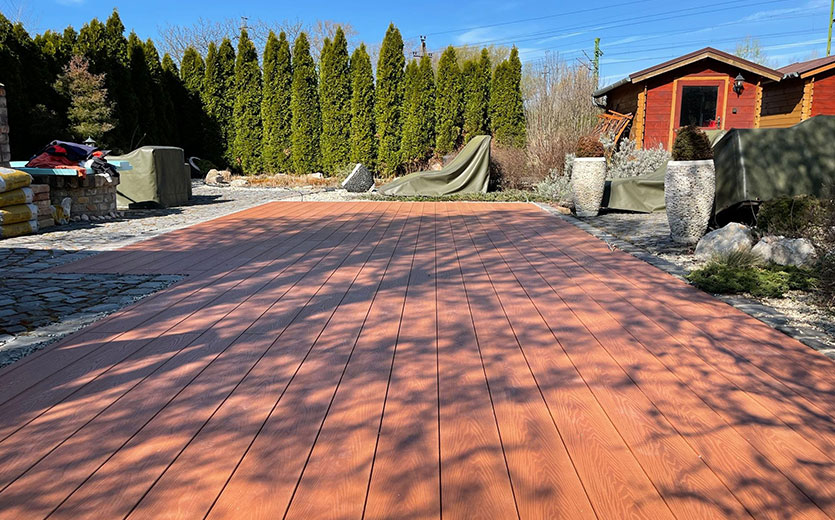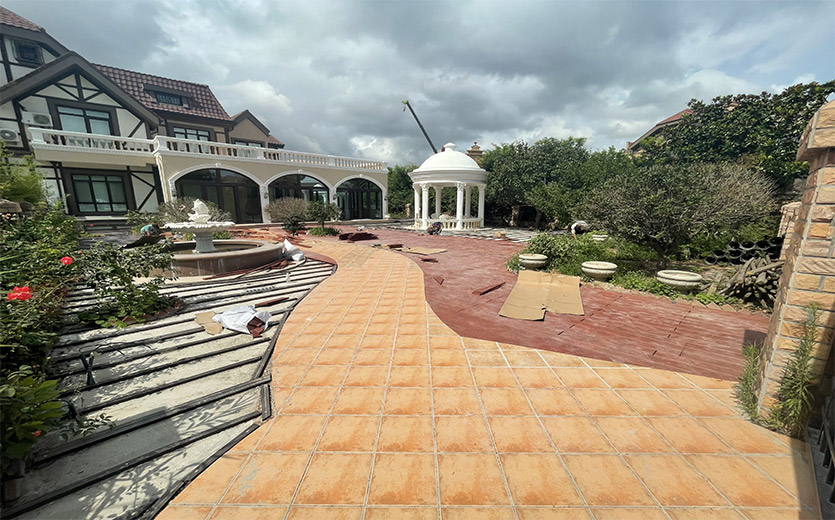
Stairs are one of the most important parts of any building and also one of the parts that are most likely to go wrong. So that people don’t trip and fall, each steps up (vertical height) and step down (horizontal size) needs to be the same every time. It’s important to think about safety when designing, building, and putting upstairs, whether they’re made of wood or composite decking boards.
How to put together stairs with composite boards
At some point during the day, it’s possible that. And you went up a set of stairs without really thinking about how to go up composite deck stairs. Or they don’t think about what it takes to make them. This is because the people who built these deck stairs did so with heart and skill. Stairs are hard for people to use because they are built in a way that makes them hard to use. And there has been a lot of work done to make stairs safer. Still, stairs are one of the most dangerous places inside and outside of the house. To build a staircase that doesn’t hurt the factory, you need to plan, think ahead, and be skilled.
The challenge is to divide the vertical and horizontal space between the two heights evenly, taking into account the size of the parts you will use. The parts of a set of stairs that matter are:
Stringers are diagonal pieces of wood that hold up both sides of the stairs. Most of the time, they are 28 to 212 pieces of wood with notches at right angles. Most of the time, there is 12 inches of space between the stringers.
Pedal: This is the part of the stairs where you step that is flat. For a safe foothold, they need to be at least 10 inches wide. And at least an inch thick to support the weight of the person standing on them.
The vertical pieces between each step are called skirting boards. You don’t have to use them when building stairs outside. But they make the steps look nice and finished. And they can keep people from falling by keeping their feet from sliding under the treads. They need to be at least half an inch thick if they are to be used.
Don’t mix up the facade with the facade, which is how far apart each tread surface is vertical. The first step in building stairs is to figure out how far apart the horizontal surfaces are. Then divide that number by eight to get how many steps you need. This is because if you add at least an inch to the thickness of the tread. It will be lower than the highest point you can climb.
If not, just add one more step to the total and start counting from there. The lateral space is more flexible, and you can make it bigger until it’s at least 10 inches wide. All of this is needed to make sure everyone is safe, but it is usually painful to do on-site. So much so that I buy stringers that have already been cut, and when I can, I adjust the total height of the project to fit the pre-made stairs.
Problems that often happen with wooden steps
As the wood boards get older, mold can grow on them. When the wood gets wet, this can become a dangerous place to slip. The board also tends to shrink, warp, or change size in other ways over time. This could cause a tripping hazard, like if the edge of the board twists as it rises and catches someone’s toes who isn’t paying attention.
As the size of the wood changes, the nails, screws, and bolts that hold it together may start to come loose. This made the uneven planks worse and caused the planks to no longer be securely attached to the deck. Loose planks on the deck’s surface are annoying, but loose planks on the deck’s stairs are dangerous. Using composite boards on the stairs can reduce some safety risks as the deck ages.
What to look for in stairs made of composite material
Composite decking is made of both man-made materials (like plastic) and natural materials (like wood) (such as wood powder). Composite decking doesn’t go bad as quickly as wood because it’s made of plastic. Also, since it’s not edible, it won’t get moldy or mildewed as wood does. There is also less of a way for water to get into the composite board. If the board is completely covered, it will be less likely to soak up water.
When building stairs, the most important thing to look for is that the space between the stringers keeps the 12-inch centerline distance. Specialized tread boards that are at least 12 inches deep and at least an inch thick so that only one decking board needs to be used for each tread for a clean look and easier installation.
Keep in mind that boards that are wider than 12 inches but thinner than an inch are actually fascia boards. You can’t use them as treads because they won’t be able to hold your weight. But you can use them as risers or kickplates.
The capping that goes around the decking board keeps moisture out of the whole thing. Some caps are hard and slippery, so choose capped composite decking for the most safety. A cover that goes around the decking board and keeps moisture out of the whole thing.
As your deck gets older, stairs made of high-quality composite decking materials with these qualities will be safer. Also, they will look better because they will have a stylish, one-piece look that is usually only found on indoor stairs.




Post a Comment